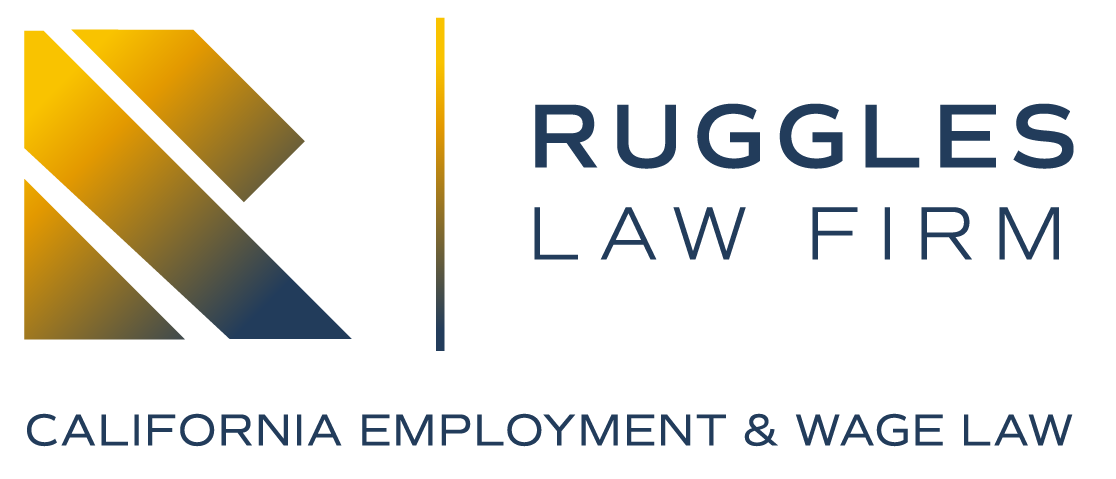Considering a sexual harassment lawsuit while still employed can feel overwhelming—but careful documentation is one of the most important steps you can take to protect yourself. Experiencing harassment at work is difficult enough, and when you’re unsure whether to report it, pursue legal action, or leave your job, building a clear, fact-based record becomes critical. This blog, authored by Matt Ruggles, explains how to document a sexual harassment claim while still working and outlines the key legal issues California employees need to understand.
Definition of Sexual Harassment: Quid Pro Quo vs. Environmental “Hostile Work Environment”
Sexual harassment is prohibited under California’s Fair Employment and Housing Act, specifically Gov. Code §12940(j).
California law recognizes two primary types of sexual harassment:
- Quid Pro Quo Harassment: Occurs when a supervisor or manager conditions a job benefit—such as a raise, promotion, or continued employment—on the employee’s submission to unwelcome sexual advances or conduct. In most circumstances, quid pro quo harassment occurs between a supervisor-harasser and a subordinate employee-victim.
- Hostile Work Environment: Involves unwanted sexual conduct that is severe or pervasive enough to create an intimidating, hostile, or offensive working environment. This can include lewd comments, jokes, gestures, inappropriate displays of images, physical contact, and other behavior based on sex or gender. Hostile work environment harassment is not limited to misconduct by a supervisor or manager like quid pro quo harassment; a hostile work environment claim can include any misconduct in the workplace or related to work, even an off-site event.
Other Forms of Illegal Harassment Under the FEHA
California’s Fair Employment and Housing Act (FEHA) also prohibits harassment based on other protected characteristics, including gender identity, gender expression, sexual orientation, pregnancy, race, religion, disability, and age. The documentation strategies discussed in this blog apply if you’re experiencing harassment based on one or more of these protected categories.
Suing During Harassment (While Working) vs. Wait to Sue Until After Being Terminated: Does It Make a Difference?
Yes, timing can significantly impact your legal strategy and the strength of your case:
-
While still employed, you often have better access to evidence—such as emails, witnesses, or time records—and stronger protection against retaliation. If your employer fires you after you complain, that termination may support a claim for retaliation or wrongful termination.
-
After termination, you may be able to assert additional claims—such as wrongful termination or retaliation—but the statute of limitations (SOL) begins to run immediately upon separation. For wrongful termination, you only have two years to file, while a harassment or discrimination claim under the FEHA has a three-year deadline. Waiting can eliminate your ability to bring related claims.
-
Waiting too long can weaken your claim. Even if your harassment claim falls within the three-year deadline, a claim filed near the end of the period may be considered stale—less compelling and harder to prove. Evidence may be lost and witnesses may forget key facts
Think of it like this: a sexual harassment claim filed after two years and eleven months may still be technically valid, but it lacks the persuasive force of a timely complaint. It’s like finishing a marathon in 24 hours instead of four—yes, you crossed the finish line, but it’s not something to celebrate in court.
Key takeaway: Once you separate from employment, your wrongful termination clock starts ticking immediately—you have two years from the date of termination to act. Don’t wait. Assert your claim immediately while the evidence is fresh, witnesses are available, and you still have access to related legal claims.
Sexual Harassment Does Not Require an Independent “Adverse Employment Action”
Unlike other discrimination claims that primarily arise from termination of employment, a sexual harassment claim does not require an independent adverse employment action like demotion or termination. The illegal harassment itself is the harm. If the conduct is severe or pervasive in the workplace, that is sufficient to support a hostile workplace claim under the FEHA.
Benefits of Suing While Still Employed
Benefit #1: Protection from Retaliation:
Once you assert a legal claim, your employer is legally prohibited from retaliating against you. Firing you after you report harassment strengthens your case significantly because of the strong implication that the termination was retaliation for asserting the legal claim.
Benefit #2: Leverage in Settlement:
If you’re willing to separate (resign) from employment as part of a resolution, that separation adds value to your claim. Employers often pay more to include a voluntary resignation in the final terms.
Benefit #3: Access to Evidence:
While employed, you can more easily gather documents, identify witnesses, and preserve communications relevant to your claim.
Benefits of Waiting to Sue Until After Termination
Benefit #1: Avoiding a Hostile Workplace:
You don’t have to work in a toxic or uncomfortable environment during the legal process.
Benefit #2: Additional Legal Claims:
If you’re fired after reporting harassment, you may also have a claim for wrongful termination in violation of public policy, which can increase your potential damages. You may also have a claim for retaliation in violation of the FEHA, assuming there is a factual connection between the termination decision and your assertion of a legal claim.
Benefit #3: Ability to Move On:
You may already be looking for or working in a new job, reducing the pressure and emotional toll of the case.
The Problem With Waiting to Assert a Documented Sexual Harassment Claim
FEHA gives employees three years from the last act of harassment to file a complaint with the California Civil Rights Department. However, waiting too long can still weaken your case. Courts may exclude older incidents if they fall outside a reasonable timeframe for establishing a pattern of misconduct. That said, under the continuing violation doctrine, employees may still include older acts of harassment if they are sufficiently connected to more recent conduct. In Richards v. CH2M Hill, Inc. (2001) 26 Cal.4th 798, the California Supreme Court ruled that earlier events may be considered if they are part of an ongoing course of harassment and not isolated or disconnected. Nevertheless, a claim is most effective when it is asserted close in the time to the alleged harm.
How to Document Your Sexual Harassment Claim If Still Employed
If you’re still working, take proactive steps to build your claim and protect your rights:
Step #1: Start Taking Notes and Prepare a Timeline
If you’re still working and believe you’re experiencing sexual harassment, it’s critical to start building your claim now. The first and most important step is to document everything — thoroughly, accurately, and as objectively as possible.
Your notes will serve as evidence if you decide to file a complaint internally or take legal action. This documentation can protect your rights and demonstrate a clear pattern of behavior.
What to Include in Your Notes:
Keep a detailed record of every incident, even if it feels minor at the time. Over time, these incidents may reveal a pattern of harassment.
Your documentation should include:
- Who was involved: Name the harasser and any witnesses present.
- What happened: Describe the incident with precision. Stick to facts — what was said or done, how it was said, body language, gestures, tone of voice.
- When it happened: Record the exact date and time or your best estimate.
- Where it occurred: Be specific — e.g., “break room on 3rd floor,” “via company Zoom call,” or “in manager’s office.”
- How it affected you: Did you feel intimidated, humiliated, uncomfortable, scared, unsafe, degraded, or harassed? Note the emotional and physical impact (e.g., anxiety, loss of sleep, fear of returning to work).
Important: Be Specific About Sexual Innuendo
If the harassment involved sexual innuendo, you must write down exactly what was said. Do not summarize or tone it down — quote the harasser word-for-word if you can remember.
Then, explain:
- What you believed the innuendo meant, even if you only realized it later.
- Why it felt inappropriate or offensive to you.
- If the innuendo was disguised as a “joke” or “compliment,” include how it made you feel and whether it seemed like it was meant to degrade or sexualize you.
Example:
On March 3rd, around 2:30 PM in the break room, John said, “You always bend over like that on purpose, don’t you?” I was leaning to grab a file from the lower cabinet. At the time, I felt uncomfortable but unsure if he meant it sexually. Looking back, I believe he was implying that I was intentionally displaying myself for his viewing, which is a sexual comment disguised as a joke.
Describe What Was Inappropriate About the Behavior
Don’t just say the behavior was “creepy” or “wrong” — explain why.
For example:
- Did the harasser invade your personal space?
- Make repeated comments about your body?
- Persist in asking you out after you said no?
- Share sexually explicit jokes, images, or texts?
- Try to touch you, brush against you, or make physical contact in a way that felt intentional?
Write down your interpretation, but always anchor your notes in the specific behavior.
Format of the Timeline
Keep your timeline to 2–3 pages. Focus on the facts, not emotions or speculation. Use bullet points or short paragraphs for each incident to keep it organized and easy to read.
Example Entry:
Date: April 12, 2025
Time: Around 10:00 AM
Location: Office hallway outside Conference Room B
People Involved: Myself, Mike R. (supervisor), Lisa T. (witness)
What Happened: Mike said, “You always dress like you’re going to a nightclub — no wonder people can’t focus.” He looked me up and down while smirking. Lisa was walking by and heard the comment. I was wearing standard office attire: blouse and slacks. I felt embarrassed and sexualized in front of a colleague.
The more detailed, consistent, and fact-based your notes are, the stronger your case will be — whether you’re reporting to HR, filing a complaint with the EEOC, or consulting with an attorney.
Step #2: Gather Relevant Workplace Documents and Information
Collect:
- The employer’s harassment and complaint policies
- Emails or messages that show or refer to the misconduct
- Names and contact information of witnesses
IMPORTANT NOTE: Do not attempt to take confidential or proprietary information from your employer; doing so may violate your employer’s policies and present an independent (and valid) reason for termination of your employment.
Step #3: Create a “Cast of Characters” to Document a Sexual Harassment Claim
To give context to your notes and timeline, create a list of all the key individuals involved — this includes not only the harasser but also anyone who witnessed the behavior, received your complaints, or plays a role in your workplace hierarchy. Think of this as your reference sheet to clarify who’s who.
This “cast of characters” should include:
- Full names
- Job titles
- Department or team
- Reporting relationships (e.g., “my direct supervisor,” “VP of HR,” “coworker at the same level”)
- Your relationship to them — whether they were the harasser, a bystander, someone you confided in, or part of management/HR.
Understanding the workplace structure is crucial, especially in sexual harassment cases where power dynamics (such as manager vs. employee) can impact how behavior is interpreted and how the company is expected to respond.
Example Entry:
Name: Jennifer Torres
Title: Senior Marketing Manager
Department: Marketing
Reporting Relationship: My direct supervisor
Role in Events: I reported the harassment to Jennifer on April 5th; she said she would “handle it” but did not follow up with me.
Name: Mark Dillon
Title: Regional Director
Department: Sales
Reporting Relationship: I do not report directly to him; he is two levels above me
Role in Events: He is the individual who made repeated sexual comments during team meetings.
This section doesn’t need to be long, but it should be clear, accurate, and detailed enough for someone outside your company (like an HR investigator, attorney, or EEOC official) to understand the relationships and roles at a glance.
Step #4: Document Any Harassment of Co-Workers
If you witness harassment of others or hear similar complaints from coworkers, document what was said, by whom, and when. This may support a broader pattern of misconduct. However, keep in mind that “me too” evidence must be limited to alleged misconduct that adversely affected your particular workplace, not just misconduct by a supervisor you’ve never encountered against a former employee you never worked with.
Step #5: Create a Comprehensive Timeline of Events
Once you’ve documented individual incidents in detail, the next step is to summarize the most relevant facts in a clean, chronological timeline. This timeline should capture the full picture — not only what the harasser did, but also what you did in response, who you reported it to, and how the company responded (or failed to respond).
Your timeline should be concise (aim for 2–3 pages max) and fact-focused — avoid emotional language and keep it professional. This document may eventually be shared with HR, legal counsel, or a government agency, so clarity and credibility are key.
What to Include in Your Timeline:
- Date of each incident
- Specific acts of harassment or misconduct (include quotes, actions, physical behavior, etc.)
- Any acts of retaliation you experienced after reporting (e.g., demotion, exclusion, disciplinary actions, threats, increased scrutiny)
- Every step you took to report the harassment (e.g., emails sent, meetings requested, internal complaint forms)
- The company’s response — include who responded, what was said or promised, whether an investigation took place, and whether any follow-up occurred
You’re not just documenting the harassment — you’re also building a record that shows how your employer handled (or failed to handle) the situation. This can be critically important if you pursue a claim for a hostile work environment or employer negligence.
Example Timeline Entry:
Date: May 2, 2024
Incident: During a team lunch, John said, “You should wear that dress more often — it’s distracting in a good way.” Several coworkers were present and laughed. I felt objectified and uncomfortable.
Action Taken: Documented the incident that evening.
Date: May 5, 2024
Incident: I reported the comment to my direct supervisor, Angela Morris, via email.
Company Response: Angela replied on May 6, saying, “I’m sure he didn’t mean anything by it, but I’ll mention it casually to him.” No formal action taken, and I was not contacted by HR.
Date: May 14, 2024
Retaliation: I was removed from a project I had been leading without explanation. When I asked Angela, she said the decision came from “higher up.” This was 9 days after I reported the harassment.
By combining the harassment itself with your efforts to report it and the company’s response (or lack thereof), your timeline becomes a powerful tool. It shows a progression and helps expose patterns of behavior and systemic failure — which can be essential for internal accountability or legal action.
Step #6: Include a Description of Emotional Distress
Document:
- Emotional impact of the harassment
- Medical or psychological symptoms
- Any doctor, therapy, or counseling visits
This supports your claim for emotional distress damages.
Step #7: Submit a Complaint to HR as Documentation of a Sexual Harassment Claim
Unless the harassment was done by a supervisor at work, you must formally report the harassment to the company through whatever process is outlined in the employee handbook. Telling a coworker or venting to friends does not count. Follow the policy outlined in your employee handbook and retain a copy of your complaint. If you have a meeting or verbal discussion with anyone from HR, confirm the meetings and other communications by email to create a factual record.
Step #8: Participate in Good Faith in Internal Investigation
An employer normally is required to investigate any complaints of workplace misconduct, especially alleged sexual harassment. Participate in the company’s internal investigation is considered mandatory if you genuinely wish to try to resolve your complaint. Engage in the investigation process and ask:
- When will it be completed?
- Who is handling it?
- What steps are being taken?
- Take notes of any meeting, communication or interview by HR or an outside investigator
Document your participation. If the employer avoids giving updates, follow up and document each interaction.
Step #9: End of Investigation
At the conclusion:
- Ask for a summary of findings
- You are not entitled to see the entire file
- Use the findings to assess whether the company took appropriate action
Step#10: Continue Documenting Misconduct If Investigation Resolution Does Not Cure Workplace Problem
If the harassment continues or worsens:
- Keep documenting
- Do not assume the employer’s action ends your claim
- Immediately seek legal advice from an attorney experienced in California employment law
If you are still employed and experiencing harassment, don’t wait. Early documentation and timely reporting may be the key to protecting your job, preserving your rights, and successfully pursuing a legal claim if needed.
FREQUENTLY ASKED QUESTIONS ABOUT DOCUMENTING A SEXUAL HARASSMENT CLAIM
Can I be fired for reporting sexual harassment?
Not legally. California law prohibits retaliation against employees who report sexual harassment or participate in an investigation. If you are terminated after reporting, you may have a separate claim for retaliation or wrongful termination.
Do I have to quit my job to file a sexual harassment claim?
No. You can file a sexual harassment claim while you are still employed. In fact, there are strategic benefits to doing so, including greater access to evidence and legal protections.
What if the sexual harassment was verbal and there’s no physical evidence?
You can still have a strong case. Consistent, detailed notes documenting each incident—including dates, times, locations, and witnesses—can help establish a pattern of misconduct.
Should I talk to HR before calling a lawyer?
You should generally report harassment internally to preserve your legal claim. However, if you are unsure how to proceed or feel unsafe, it’s wise to consult an employment attorney before or immediately after contacting HR.
How long do I have to file a claim in California?
You have three years from the last act of harassment to file a complaint with the California Civil Rights Department. However, waiting too long may make earlier events inadmissible or harder to prove.
Can I sue my employer if the internal investigation finds no wrongdoing?
Yes. A company’s internal investigation does not override your right to pursue a legal claim. If the investigation is flawed or the harassment continues, you should speak to an attorney about your options.
Conclusion
Sexual harassment in the workplace can feel isolating and overwhelming—especially when you’re still employed and unsure of your next step. But under California law, you have rights, and documenting the harassment effectively can make all the difference. From creating a detailed timeline to formally reporting misconduct and participating in internal investigations, each step you take can strengthen your legal position and protect you from retaliation. If the problem continues or your employer fails to act, seek legal advice right away. Early action preserves your rights and puts you in the best position to hold your employer accountable.
If you’re being harassed at work and are unsure where to start, read What Should I Do If I Experience Workplace Harassment? for a step-by-step guide.”
Contact the Ruggles Law Firm at 916-758-8058 to Evaluate Your Potential Lawsuit
Matt Ruggles has a thorough understanding of California employment laws and decades of practical experience litigating employment law claims in California state and federal courts. Using all of his knowledge and experience, Matt and his team can quickly evaluate your potential claim and give you realistic advice on what you can expect if you sue your former employer.
Contact the Ruggles Law Firm at 916-758-8058 for a free, no obligation consultation.
Blog posts are not legal advice and are for information purposes only. Contact the Ruggles Law Firm for consideration of your individual circumstances.




